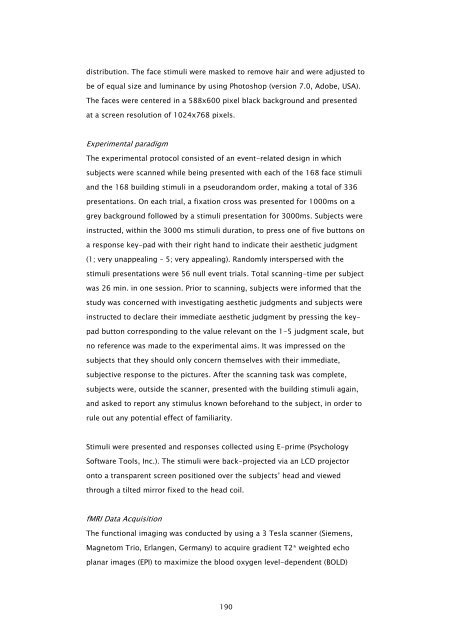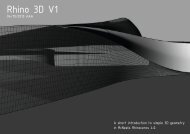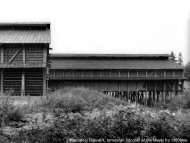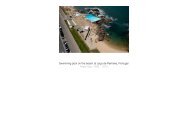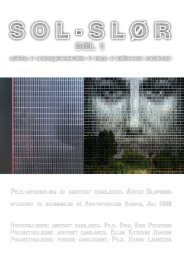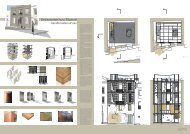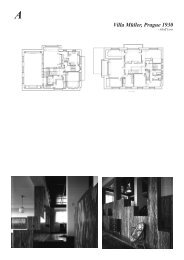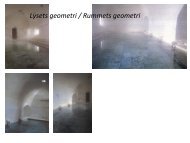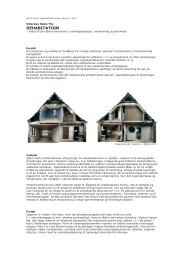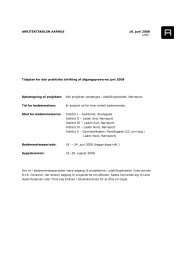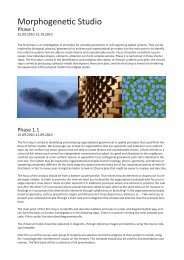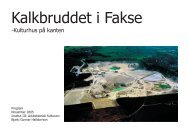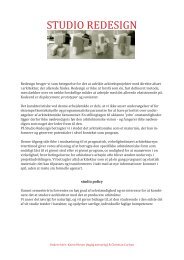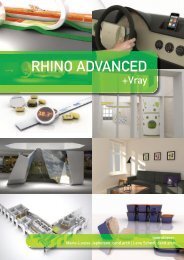Ph.d.-afhandling - Arkitektskolen Aarhus
Ph.d.-afhandling - Arkitektskolen Aarhus
Ph.d.-afhandling - Arkitektskolen Aarhus
Create successful ePaper yourself
Turn your PDF publications into a flip-book with our unique Google optimized e-Paper software.
distribution. The face stimuli were masked to remove hair and were adjusted to<br />
be of equal size and luminance by using <strong>Ph</strong>otoshop (version 7.0, Adobe, USA).<br />
The faces were centered in a 588x600 pixel black background and presented<br />
at a screen resolution of 1024x768 pixels.<br />
Experimental paradigm<br />
The experimental protocol consisted of an event-related design in which<br />
subjects were scanned while being presented with each of the 168 face stimuli<br />
and the 168 building stimuli in a pseudorandom order, making a total of 336<br />
presentations. On each trial, a fixation cross was presented for 1000ms on a<br />
grey background followed by a stimuli presentation for 3000ms. Subjects were<br />
instructed, within the 3000 ms stimuli duration, to press one of five buttons on<br />
a response key-pad with their right hand to indicate their aesthetic judgment<br />
(1; very unappealing – 5; very appealing). Randomly interspersed with the<br />
stimuli presentations were 56 null event trials. Total scanning-time per subject<br />
was 26 min. in one session. Prior to scanning, subjects were informed that the<br />
study was concerned with investigating aesthetic judgments and subjects were<br />
instructed to declare their immediate aesthetic judgment by pressing the key-<br />
pad button corresponding to the value relevant on the 1-5 judgment scale, but<br />
no reference was made to the experimental aims. It was impressed on the<br />
subjects that they should only concern themselves with their immediate,<br />
subjective response to the pictures. After the scanning task was complete,<br />
subjects were, outside the scanner, presented with the building stimuli again,<br />
and asked to report any stimulus known beforehand to the subject, in order to<br />
rule out any potential effect of familiarity.<br />
Stimuli were presented and responses collected using E-prime (Psychology<br />
Software Tools, Inc.). The stimuli were back-projected via an LCD projector<br />
onto a transparent screen positioned over the subjects’ head and viewed<br />
through a tilted mirror fixed to the head coil.<br />
fMRI Data Acquisition<br />
The functional imaging was conducted by using a 3 Tesla scanner (Siemens,<br />
Magnetom Trio, Erlangen, Germany) to acquire gradient T2* weighted echo<br />
planar images (EPI) to maximize the blood oxygen level-dependent (BOLD)<br />
190


